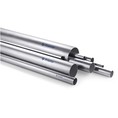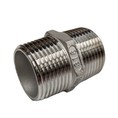X' huma it-tliet tipi ta' pajp fittings?**
**Introduzzjoni
Pipe fittings huma essenzjali komponenti użati in plumbing sistemi to connect and control the flow of fluids through pipes. They are designed to create sturdy and leak-free connections between pipes, allowing for easy installation, disassembly, and maintenance. There are various types of pipe fittings available, each sservi )(kullħadd iservi specific purposes. In dan artiklu, we will explore the three most common types of pipe fittings and tagħhom funzjonijiet.
1. Elbow Fittings **
**Ħarsa ġenerali:
Minkeb fittings, ukoll magħruf as liwjiet, huma jintużaw biex change the direction of the pipe''s flow. They are typically installed at corners or where the pipeline needs to change course. Elbow fittings come in various angles, such as 45 degrees, 90 degrees, degrees, 180 degrees, allowing flessibility in pipeline design and fluid flow.
Funzjoni:
Il primarja funzjoni ta ' minkeb fittings huwa biex ridirezzjona il fluss ta' fluwidi madwar ostakli jew kantunieri. Billi aġġustament l- angolu ta ' il minkeb fitting, il- ... pipeline jista ' ikun personalizzat biex jissodisfa speċifiku rekwiżiti. Għal kumpless pajpijiet sistemi, a kombinazzjoni ta ' differenti angolu minkeb fittings jista' be użat biex jiżgura l-aħjar fluss u jipprevjeni pressjoni telf.
Tipi:
Minkeb fittings jista ' be ikklassifikat ibbażat fuq l- angolu tagħhom liwja . L l-aktar komuni tipi jinkludu :
1. 45-Degree Elbow Fittings: These fittings are used when a relatively gentle change in direction is required in the pipeline. They are commonly used in low-pressure applications and when there is limited space for maneuvering the pipe.
2. 90-Degree Elbow Fittings: Dawn fittings are the most commonly used and provide a sharp turn in the pipeline. They are suitable for various applications and are readily available in most plumbing supply stores.
3. 180-Degree Elbow Fittings: Also known as U-bends, these fittings redirect the flow of fluid in the opposite direction, 180 degrees from the original path. They are commonly used in applications where the pipeline needs to double back on itself, such as in drainage systems.
2. Tee Fittings**
Tee fittings, named after their shape, resemble the letter "T." They are used to create branching connections in a pipeline, allowing the flow of fluid in two or more directions simultaneously. Tee fittings have three openings, with one inlet and two outlets at a 90-degree angle.
Funzjoni:
Il main funzjoni ta ' tee fittings huwa biex taqsam jew tgħaqqad fluwidu fluss fi pipelines. Huma huma komunement użati fi plumbing sistemi fejn multipli ħwienet jew separati flussi huma meħtieġa. Billi jgħaqqdu pajpijiet ma il- bokka u ħwienet ta' a tee fitting, il- fluwidu jista ' ikun dirett għal diversi postijiet simultanjament.
Tipi:
Tee fittings can be categorized based on the location and angle of the outlets. Some common types of tee fittings include:
1. Equal Tee Fittings: Also known as straight tees, these fittings have all three openings the same size. They are used to combine or divide fluid flow equally.
2. Reducing Tee Fittings: These fittings have one inlet and two outlets of different sizes. They are used to reduce or increase the pipe size filwaqt li żamma a konnessjoni ma l-oriġinali pipeline.
3. Barred Tee Fittings: These specialized fittings have a metal bar across the main pipeline opening to prevent the fluid from flowing freely. They commonly used in gas or oil pipelines to facilitate measurement, sampling, or controlling flow.
3. Coupling Fittings**
Coupling fittings are used to join two pipes together in a straight line, ensuring a secure and leak-free connection. They often used when pipes of the same size need to be extended or repaired. Couplings are available in various materials such as metal, PVC, and rubber, depending on the requirements of the plumbing system.
Funzjoni:
Il primarja funzjoni ta ' coupling fittings huwa biex tikkonnettja u testendi pajpijiet in a dritta linja. Huma jipprovdu a issikkat siġill biex jipprevjenu tnixxija u iżommu il - strutturali integrità ta ' il - plaming sistema. Couplings huma komunement użati fil kostruzzjoni jew manutenzjoni proġetti fejn pajpijiet ħtieġa biex ikunu magħquda sigurament.
Tipi:
Coupling fittings can be classified based on tagħhom design and installation method. Some common types include:
1. Kompressjoni Akkoppjar: Dawn fittings jikkonsistu ta ' żewġ kmiem bi interni ħjut u a ċentrali nut. Huma issikkati bl-użu a wrench biex toħloq a pressjoni stretta konnessjoni. Kompressjoni couplings huma komunement użati fil plaming sistemi li jeħtieġu frekwenti żarmar jew tiswijiet.
2. Push-Fit Couplings: Also known as quick-connect fittings, these couplings allow pipes to be joined by push-fitting them together. They are suitable for various pipe materials, such as copper, PVC, or PEX. Push-fit couplings provide a konvenjenti and tool-free installation method.
3. Threaded Couplings: These fittings have external male threads on both ends, allowing them to be screwed onto pipes with corresponding female threads. They are widely used in plumbing systems to provide a secure and leak-free connection.
Konklużjoni
Fi konklużjoni, pipe fittings play a vital role in plumbing systems by enabling the connection, control, and redirection of fluid flow through pipes. Elbow fittings facilitate changes in direction, tee fittings allows permiting branching connections, and coupling fittings fittings provide straight line connections between pipes. Understanding the different types of pipes fittings and functions is essential for designing and maintaining efficient plumbing sistemi. Propju għażla u installazzjoni ta ' pajpijiet fittings kontribwit għal mingħajr tnixxija u affidabbli pipeline netwerks.




